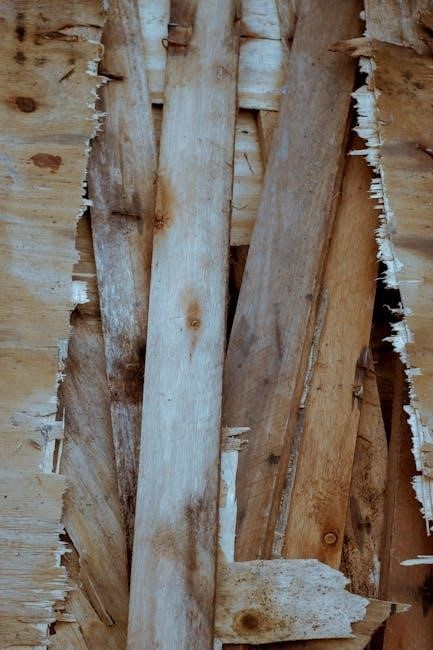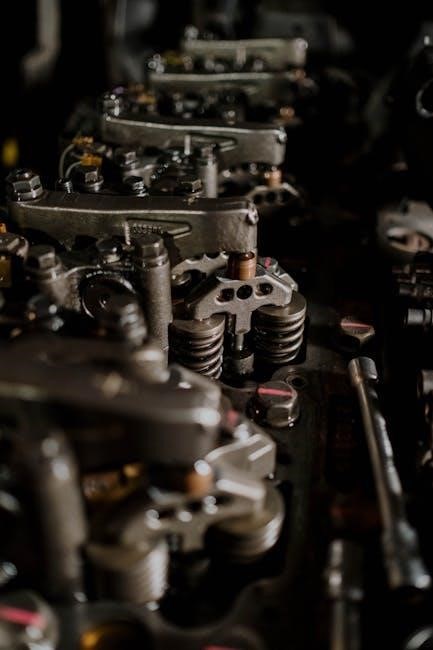End grain cutting boards are renowned for their durability and knife-friendly surfaces. Constructed by arranging wood fibers vertically, they minimize wear and tear, offering a long-lasting, elegant solution.
1.1 What is an End Grain Cutting Board?
An end grain cutting board is crafted by arranging wood fibers vertically, creating a durable, knife-friendly surface. Constructed by gluing wood strips together and slicing them, this design minimizes wear and tear, offering a long-lasting, elegant solution for kitchen use. Its unique structure is highlighted in various tutorials and plans available as PDFs, making it a popular project for woodworking enthusiasts.
1.2 Benefits of End Grain Cutting Boards
End grain cutting boards offer exceptional durability and knife-friendliness due to their vertical wood fiber structure. They resist deep cuts and scratches better than other styles, ensuring longevity. The natural grain pattern also provides a visually appealing surface. Additionally, end grain boards are less likely to dull knives and maintain a clean, bacteria-resistant surface with proper care, making them a practical and elegant choice for kitchens.
Materials and Tools Needed
Hardwoods like maple and walnut are ideal for end grain cutting boards. Essential tools include a table saw, planer, clamps, and sandpaper. Safety gear like gloves and goggles is crucial.
2.1 Types of Wood for End Grain Cutting Boards
Hardwoods like maple, walnut, and cherry are popular for end grain boards due to their density and durability. These woods resist wear and moisture, ensuring longevity. Avoid softwoods as they may not hold up well. Properly dried lumber is essential to prevent warping during construction.
2.2 Essential Tools for Construction
The process requires a table saw for precise cuts, a planer to mill lumber, and a drum sander for smoothing surfaces. Clamps, glue, and a miter saw are also crucial for assembly and final shaping. Safety gear like goggles and a dust mask are recommended to ensure a safe working environment throughout the project.
Design and Planning
Designing an end grain cutting board involves creativity and precision. Plan dimensions, patterns, and wood arrangements to ensure functionality and visual appeal, using various wood types for unique effects.
3.1 Choosing the Right Dimensions
Selecting the correct dimensions is crucial for functionality. Common sizes range from 12×18 inches for kitchens to smaller, portable options. Consider the space where the board will be used and the user’s preference for handling. Standard thickness is 1.5 to 2 inches to ensure stability and durability. Proper planning ensures the board fits seamlessly into its intended environment.
3.2 Design Patterns for End Grain Cutting Boards
End grain cutting boards offer endless creativity with various design patterns. Popular options include checkerboard, striped, and geometric layouts. Contrasting wood colors enhance visual appeal, while intricate 3D illusions add sophistication. Simple, symmetrical designs are ideal for beginners, while advanced techniques like optical illusions cater to skilled craftsmen; Each pattern transforms the board into a functional work of art.
Step-by-Step Construction
Creating an end grain cutting board involves a straightforward process: mill lumber, glue-up, sand, and finish. Free PDF plans guide each step for perfect results.
4.1 Milling and Preparing the Lumber
Milling involves cutting lumber into manageable sizes and planing it to achieve smooth, even surfaces. Start by ripping boards to width and cutting them to length using a miter saw. Next, plane the wood to ensure uniform thickness. This step is crucial for proper glue-up and a professional finish. Use a planer or hand planes for precise results.
4.2 Glue-Up Process for End Grain
The glue-up process involves aligning the wood strips and applying adhesive. Start by spreading wood glue evenly on the ends of each strip. Carefully stack them, ensuring proper alignment. Use clamps to apply even pressure, minimizing gaps. Allow the glue to dry completely before handling. This step requires precision to achieve a strong, durable bond and a seamless appearance.
4.3 Sanding and Final Shaping
Sanding is crucial for achieving a smooth surface. Begin with coarse-grit sandpaper to remove imperfections, then progress to finer grits for a polished finish. Use a sanding block to ensure evenness, especially on flat areas. After sanding, inspect for any remaining imperfections and address them. Finally, shape the edges to your desired design, ensuring they are smooth and free of splinters for a professional finish.
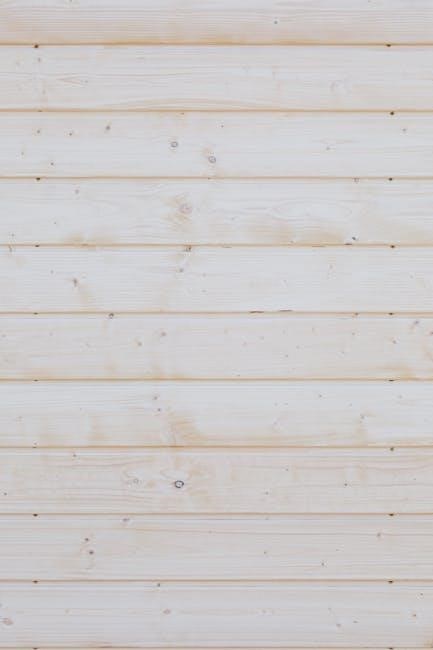
Finishing Touches
Finishing touches enhance durability and aesthetics. Apply protective coatings and consider adding handles or personal designs for a polished look.
5.1 Applying Oil and Wax
Applying oil and wax is crucial for protecting the wood and maintaining its appearance. Use food-safe oils like mineral oil to seal the grain, then apply wax for a durable finish. Regular application ensures moisture resistance and prevents cracking. Always choose natural, non-toxic products to keep your cutting board safe and functional for years.
5.2 Adding a Personal Touch or Handle
Personalize your cutting board with engravings or a custom handle for added functionality and style. Handles can be made from wood or metal, enhancing portability. Engraving names or designs adds a unique touch. Ensure all materials are food-safe and durable. These personal touches make the board more functional and visually appealing, perfect for gifts or personal use.
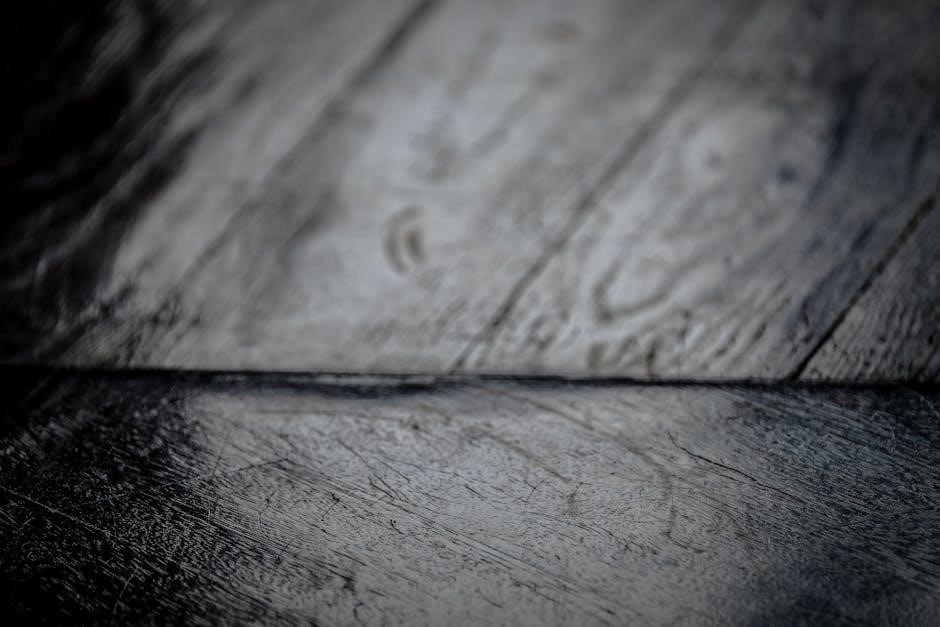
Maintenance and Care
Regular maintenance ensures longevity. Clean with soap and water daily, dry thoroughly to prevent warping, and apply oil periodically to maintain the finish.
6.1 Cleaning and Sanitizing
Regular cleaning is essential to maintain hygiene. Wash the board with mild dish soap and warm water, scrubbing gently to remove residue. Rinse thoroughly and dry with a clean towel. Avoid soaking or using harsh chemicals, as they can damage the wood. Sanitize periodically with a vinegar solution to eliminate bacteria without harming the finish.
6.2 Periodic Maintenance Tips
Regular maintenance ensures longevity. Apply food-safe oil (e.g., mineral oil) every 1-2 months to keep the wood hydrated. Periodically, use a beeswax-based conditioner for added protection. Avoid extreme temperature changes and never soak the board. Store in a dry place, preferably sandwiched between paper to prevent warping. These steps maintain the board’s appearance and functionality over time.
Advanced Techniques
Explore advanced methods like creating 3D optical illusions or incorporating multiple wood types for unique designs. These techniques enhance visual appeal and showcase craftsmanship.
7.1 Creating 3D Optical Illusions
Creating 3D optical illusions on end grain cutting boards involves advanced techniques like alternating wood types and precise cutting. This method adds depth and visual intrigue, making the board stand out. Woodworkers use contrasting grains and colors to achieve this effect, ensuring a professional and artistic finish. Detailed plans and tutorials guide enthusiasts through this complex yet rewarding process.
7.2 Incorporating Multiple Wood Types
Incorporating multiple wood types enhances the visual appeal and functionality of end grain cutting boards. By combining woods with contrasting colors and grain patterns, creators can craft unique, eye-catching designs. This technique also allows for the blending of durable hardwoods, ensuring a sturdy and aesthetically pleasing final product. Detailed PDF plans often include tips for selecting complementary wood species and arranging them effectively.
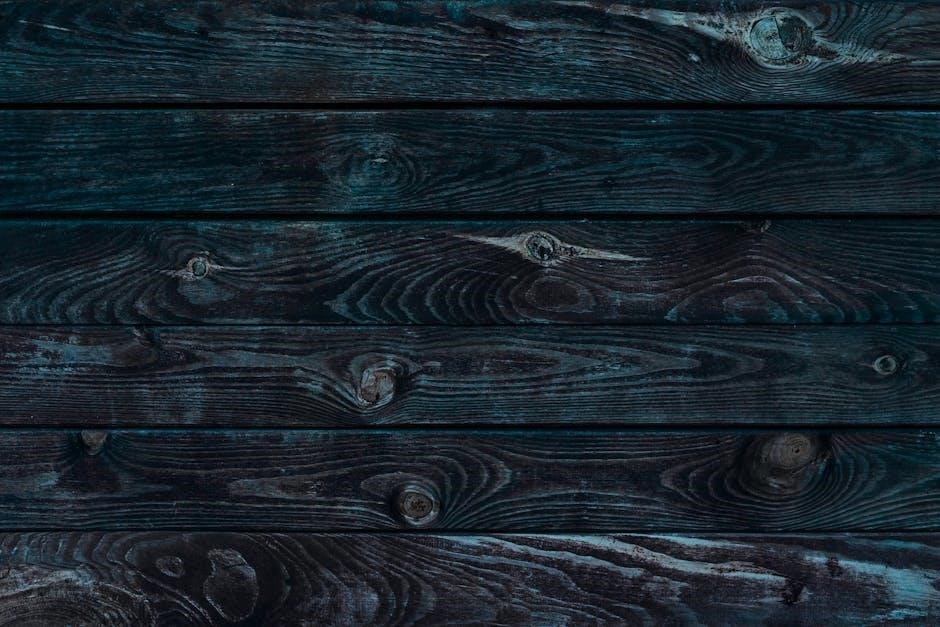
PDF Resources and Plans
Discover comprehensive PDF guides and plans for crafting end grain cutting boards. These resources offer step-by-step tutorials, measurements, and customization tips for all skill levels.
8.1 Free PDF Downloads for Beginners
Beginners can access free PDF downloads that outline the basics of creating end grain cutting boards. These guides include detailed step-by-step instructions, material lists, and essential tips for a successful project. They are designed to help newcomers understand the process, from selecting wood to finishing touches, ensuring a smooth learning experience.
8.2 Detailed Sketchup Files for Customization
Detailed Sketchup files allow users to customize end grain cutting board designs. These files provide precise measurements and layouts, enabling creators to modify patterns, sizes, and wood orientations. They cater to both beginners and experienced woodworkers, offering flexibility and creativity. Combined with PDF plans, they ensure a seamless workflow from design to construction, fostering unique and personalized projects.
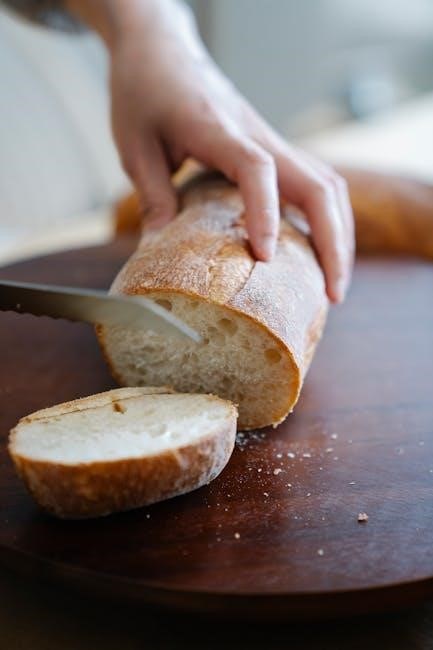
Safety Tips
Always wear protective gear like safety glasses and gloves when working with power tools. Ensure proper ventilation when using chemicals and keep loose clothing tied back.
9.1 Working with Power Tools Safely
Always wear safety glasses and hearing protection when operating power tools. Ensure blades and bits are sharp to avoid kickback. Use push sticks or splitters for rip cuts. Keep loose clothing tied back and long hair secured. Maintain a clean, well-lit workspace to prevent tripping hazards. Never leave running tools unattended, and store them properly after use. Keep a first aid kit nearby.
9.2 Handling Wood and Chemicals
Always handle wood with care to avoid splinters and injuries. Use gloves when working with rough or treated wood. When applying finishes or glues, wear protective gloves and goggles. Ensure good ventilation to avoid inhaling chemical fumes. Store chemicals and finishes in well-ventilated areas, away from heat sources. Follow manufacturer instructions for safe usage and disposal. Prioritize safety to ensure a durable and long-lasting cutting board.
Creating an end grain cutting board is a rewarding project that combines functionality with beauty. With the right tools and techniques, you can craft a durable, long-lasting piece for your kitchen. Happy building!
10.1 Final Thoughts on Making End Grain Cutting Boards
Creating an end grain cutting board is a fulfilling woodworking project that blends functionality with artistry. The process sharpens skills in milling, glue-up, and design, resulting in a durable, beautiful kitchen tool. With proper care, your board will last for years, becoming a cherished addition to your home. Embrace the journey and enjoy the satisfaction of crafting something truly useful and elegant.
10.2 Encouragement to Start Your Project
Embrace the rewarding journey of creating an end grain cutting board! With clear plans and basic woodworking tools, you can craft a stunning, functional piece for your kitchen. Don’t hesitate—start small, learn as you go, and enjoy the satisfaction of creating something both beautiful and practical. Your first project is just the beginning of a lifelong woodworking adventure!
